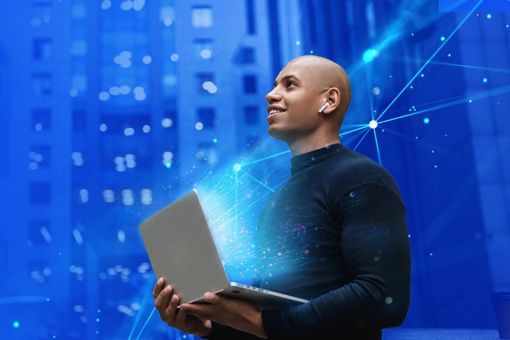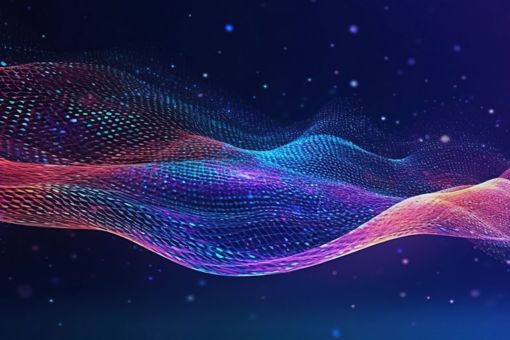The emergence of generative AI (GenAI) has ignited a race among organizations to bolster their artificial intelligence (AI) arsenal. Through GenAI, they are seeking to improve efficiency, productivity and innovation, and achieve a new level of employee and customer personalization. Proceeding with urgency and caution, organizational leaders must balance the need to remain competitive with the uncertainty of how this technology will transform their business, workforce, and workplace.
According to KPMG’s Generative AI Adoption Index research, the top three use cases for GenAI at work currently are generating ideas, conducting research, and creating presentations. While these use cases have unarguably provided opportunities, business teams have largely fixated on repurposing these capabilities rather than utilizing the underlying technology. We are, however, seeing more appetite for specialized applications that take full advantage of GenAI’s ability to make meaningful sense of a lot of information.
What lies ahead is a rethinking of how to partner people with this technology. Chief human resource officers and their teams will need to help lay the groundwork for a modern workplace that optimizes people through intelligent organization and work design.
This article explores GenAI-driven workforce impacts and the role HR professionals can play to support AI transformations.

Generative AI will change the workplace
GenAI will pose challenges to the work experience. Organizations will need to build culture across a workforce less dependent on worker interaction, address employee mental wellness to avoid burnout from change, and calm ethical and privacy concerns. Improperly implemented AI could pose significant challenges to the quality of work experience. Human resource and operational teams need to consider:
- How can GenAI improve talent acquisition and recruitment, and cultivate organizational beliefs, values, and skills?
- How can GenAI facilitate onboarding and orientation across a more widely distributed workforce to ensure enculturation?
- How can GenAI elevate the messages from leaders to provide workers with purpose and direction?
- How can GenAI enhance training and development?
- How can HR use GenAI to improve employee performance and productivity while managing workforce tensions?
- How can GenAI foster employee engagement with global colleagues?
- How can GenAI be integrated into succession planning and leadership development strategies to improve organizational resilience?
- How can HR ensure the use of GenAI in talent management adheres to ethical standards and respects employee privacy while capitalizing on its ability to leverage all kinds of enterprise data?
The next five years will bring significant change and how leaders prioritize the human-condition as part of their AI transformation will determine whether they can address global labour and skills shortages.

Generative AI requires a realignment of workforce competencies
GenAI can aid people with cognitive tasks that require analytical, language, and critical-thinking capabilities. Through these technologies, people can quickly aggregate and make sense of information to support decision-making and coordinate organizational action. But as the use of GenAI proliferates, any differentiator achieved through the initial wave of GenAI adoption will erode as more companies use these tools.
To remain competitive, organizations will need to rethink how work is assigned to take advantage of uniquely human capabilities. For instance, people significantly outperform GenAI when it comes to making connections among seemingly unrelated data points that can drive novel ideas, navigating complex systems, and aligning behaviours and messaging to ethical, cultural and social nuances.
In fact, we continue to see a movement towards analytical thinking and creativity as the most desirable workforce competencies. In 2023, the World Economic Forum listed analytical thinking, creative thinking, AI and big data, leadership, lifelong learning, resilience, motivation, and empathy among top skills for the modern workforce.
A desire for these skills acknowledges that organizational efficiencies and process execution no longer are enough in an AI-enabled market. Companies now must expedite innovation, and to do so they need to leverage human ingenuity. The emergence of a right-brain economy will benefit organizations that have a workforce that better identifies big opportunities and challenges, deconstructs problems, sources and analyzes appropriate data, and constructs new business solutions.

Generative AI will change team compositions
GenAI systems present an opportunity to streamline support roles and functions. Although GenAI will ultimately impact all roles across an organization, middle mangers and corporate service teams could be the first to experience significant job transformation as organizations seek to reduce administrative overhead and reallocate investment to profit centres.
Middle managers will, at the very least, be able to manage larger volumes of requests and direct bigger teams with the assistance of GenAI-enabled systems. Corporate service teams will need to rethink how their business units can best capitalize on human talent within their value chain.
GenAI systems will manage data entry, information processing, and content synthesis so that people can assume higher-order operations focused on service and product design, operational design, and performance monitoring.
Leaders who supercharge their organization by shifting routine housekeeping activities to GenAI will be able to assume a more aggressive market posture than those that see AI as a chance to do the same with less. Early indications suggest GenAI is on track to augment and evolve the modern workforce, not eliminate the need for people.
Next steps
While the arrival of GenAI calls for caution, organizations must begin envisioning its application to avoid being left behind. HR teams should be involved early to provide their unique insights and take a proactive lead in identifying workforce considerations. HR will also have to be committed to leveraging GenAI within its own department to improve employee experience and performance across the talent lifecycle, such as the examples cited below:
- Planning: Develop accurate forecasts of talent needs in real time and identify suitable talent pools.
- Recruiting: Elevate market presence and community engagement to rapidly source and screen prospective recruits.
- Development: Provide just-in-time, highly personalized training within the flow-of-work to minimize business disruption and maintain service and product quality.
- Deploying: Mobilize task-specific teams to address emerging opportunities and threats.
As GenAI extends to all business functions, HR is ideally positioned to help leaders consider how to optimize the partnership between people and AI, while nurturing a positive workplace culture and reskilling their workforce.
62 per cent of employees surveyed say that investment in upskilling influences whether they join, leave, or stay with organizations
72 per cent agree that continuous learning will be crucial for them to stay relevant in their field
According to KPMG’s Future of Work report, 62 per cent of employees surveyed say that investment in upskilling influences whether they join, leave, or stay with organizations, and 72 per cent agree that continuous learning will be crucial for them to stay relevant in their field. Appropriate training programs, workplace policies, organizational design, and change management strategies will ease the transition to GenAI-enabled work.
Leadership’s visible commitment to retaining human talent during GenAI implementation will alleviate concerns about job displacement and ensure organizations don’t face a critical loss of organizational knowledge. While GenAI is likely to transform job roles, particularly in areas such as data entry, content generation, and content retrieval, it will also create new opportunities in data sourcing, data governance, system training, monitoring, solution architecting, and operational management.
Key takeaways
Implemented right, GenAI can liberate the workforce at the same time as it strengthens organizational outcomes. To embrace a human-centric approach to generative AI, HR leaders can start by following these steps:
- Identify, quantify, and prioritize manual tasks and role augmentation.
- Target specific operational and performance outcomes.
- Reshape the workforce to incorporate generative AI.
At KPMG, we understand that navigating the world of AI can be complex, especially when it comes to workforce dynamics, risk, governance, technology, and data privacy. We are investing billions of dollars in AI capabilities and building AI solutions and tools that we also use ourselves. This investment allows us to enhance the quality of our AI services and insights in a way that is responsible, trustworthy, and safe.
Reimagine the future of work with a tailored AI talent strategy.
KPMG. Make the Difference.
Insights and resources
Connect with us
Stay up to date with what matters to you
Gain access to personalized content based on your interests by signing up today
Connect with us
- Find office locations kpmg.findOfficeLocations
- kpmg.emailUs
- Social media @ KPMG kpmg.socialMedia





